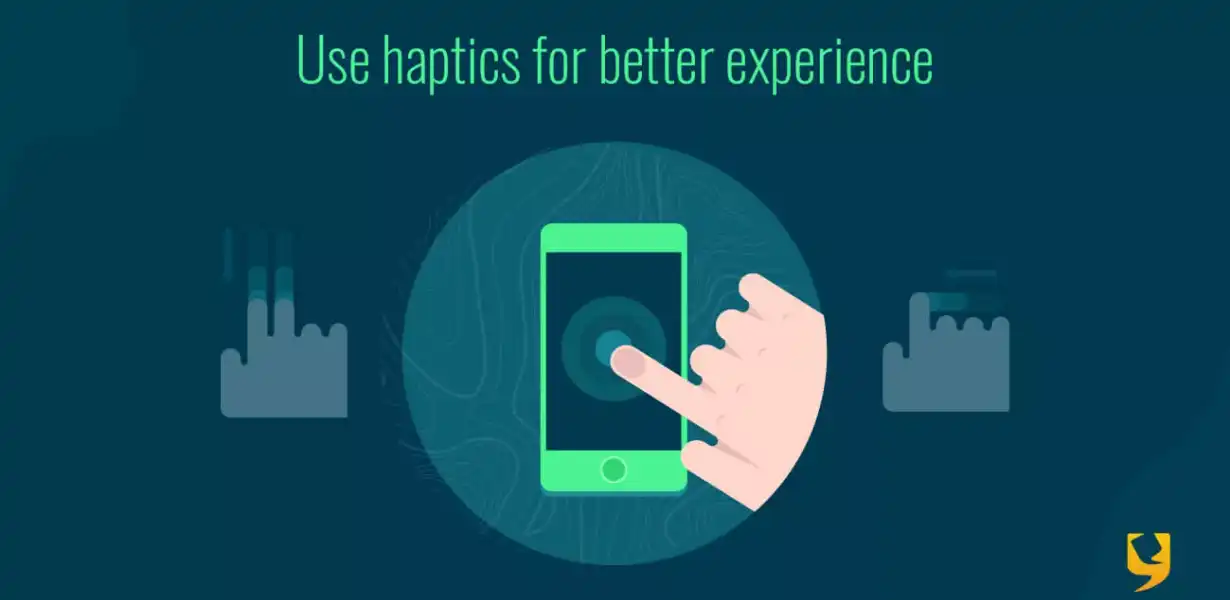
Haptic Feedback Redefined: How Cutting-Edge Technology Enhances User Experience
- Post
- August 7, 2023
- UI/UX Design, UX Design, Web Design
- 0 Comments
Welcome to a journey where touch meets technology, and a new era of interaction is unveiled. In this age of rapidly advancing digital interfaces, haptic feedback has emerged as a formidable game-changer, elevating the user experience to unparalleled heights. While visuals and sound have long dominated the realm of technology, haptics introduces the crucial missing link: tactile sensation. As the boundaries between the physical and digital blur, users are no longer mere spectators but active participants, engaging their sense of touch to navigate and perceive the virtual world.
The UX Design Process: Orchestrating Sensory Symphony
In the orchestration of user-centric design, haptic feedback plays a pivotal role. The UX design process, which typically revolves around visuals and functionality, now encompasses the tactile dimension. By incorporating haptic elements into wireframes and prototypes, designers can shape the way users perceive and interact with various elements on the screen. This process demands a deep understanding of how different haptic sensations correlate with specific actions or events, ensuring that each touch or gesture feels not only intuitive but also gratifying.
Unlocking Seamless Integration: How Haptics Elevate Immersion
The integration of haptic feedback within interfaces has unlocked a new realm of immersion. Imagine the subtle vibration that mirrors a keyboard press, or the gentle pulse that follows a navigation command. These tactile cues provide users with a sense of physicality, bridging the gap between the real and virtual worlds. Such integration enhances engagement, making interactions more memorable and enjoyable. For instance, in mobile gaming, haptic feedback can mimic the recoil of a virtual weapon or the rumble of a racing car engine, transforming the gaming experience into an interactive sensory adventure.
The Mechanics Behind the Magic: Technology Demystified
Behind the scenes, sophisticated technology drives the magic of haptic feedback. Piezoelectric actuators, linear resonant actuators (LRAs), and electroactive polymers work in harmony to generate vibrations and forces that users can feel. These mechanisms are meticulously calibrated to deliver a spectrum of sensations, from a gentle tap to a pulsating heartbeat. The synchronization of these mechanics with on-screen events, such as button presses or environmental changes, is where the real enchantment happens, creating a multisensory journey that captivates the user’s attention.
Human-Centered Design: Prioritizing Accessibility and Inclusivity
As the UX design landscape evolves, the concept of accessibility gains prominence. Haptic feedback, with its potential to enhance interaction for individuals with visual or auditory impairments, is a driving force in fostering inclusivity. For instance, a subtle vibration can replace a visual notification, ensuring that users with visual impairments can stay informed. Moreover, the ability to customize haptic responses empowers users to tailor their experience according to their preferences, making technology a more personalized and accommodating tool.
Cognitive Load and Feedback Refinement: A Harmonious Duo
In the pursuit of seamless user experiences, the concept of cognitive load plays a pivotal role. Haptic feedback serves as an ally in reducing cognitive load by providing real-time confirmations and guidance. When users interact with an interface, their focus can remain on the task at hand, as haptic cues intuitively validate their actions. This harmony between cognition and feedback is particularly pronounced in scenarios where visual attention is limited, such as in-car infotainment systems. Haptic feedback guides drivers without diverting their gaze from the road, ensuring safety and user satisfaction.
Beyond Touchscreens: Expanding Haptic Horizons
While touchscreens have been the primary canvas for haptic exploration, the journey does not end there. Innovations are pushing the boundaries, extending haptic feedback to diverse platforms. Virtual reality (VR) and augmented reality (AR) experiences are enriched by haptic sensations that make digital environments feel tangible. Wearable devices, such as smartwatches, bring haptic notifications directly to the user’s skin. Even in industries like healthcare, haptic feedback finds applications in telemedicine, where doctors can remotely palpate patients using robotic gloves. This expansion of haptic horizons opens doors to uncharted territories, inviting designers and developers to pioneer new avenues of interaction.
Optimizing the User Journey: Analytics and Iteration
In the pursuit of crafting unparalleled user experiences, data-driven iteration becomes paramount. Analytics platforms track user engagement with haptic elements, revealing insights into what works and what needs refinement. This iterative approach ensures that haptic feedback is not just a novelty but a fundamental component that consistently enhances the UX. By analyzing user responses to different haptic patterns, designers can refine their strategies, creating experiences that are not only enjoyable but also effective in conveying information and eliciting desired actions.
Final words
In the evolving landscape of UX design, haptic feedback emerges as a catalyst for redefining user experiences. By seamlessly integrating tactile sensations into digital interfaces, designers create immersive journeys that engage users on multiple levels. From enhancing accessibility to minimizing cognitive load, haptic technology transforms the way users perceive and interact with technology. As we venture into this new era of interaction, the synergy between technology and touch promises to shape a more inclusive, intuitive, and captivating digital world.
Commonly Asked Questions: Providing Solutions
Q1: What are some practical examples of haptic feedback in everyday technology?
A1: Practical instances include smartphone vibrations for notifications, game controllers simulating different textures, and wearable devices providing haptic cues for navigation.
Q2: How does haptic feedback impact accessibility in digital interfaces?
A2: Haptic feedback improves accessibility by offering tactile cues that replace or enhance visual and auditory notifications, catering to users with varying abilities.
Q3: Are there any challenges in implementing haptic feedback effectively?
A3: Yes, challenges include achieving consistency in haptic responses across devices and platforms, as well as the need for careful calibration to avoid overwhelming users.
Q4: Can haptic technology be integrated into virtual reality experiences?
A4: Absolutely, haptic technology enriches VR experiences by adding tactile sensations, making digital environments feel more lifelike and immersive.
Q5: How can designers ensure that haptic feedback aligns with user expectations?
A5: Designers should conduct thorough user testing and gather feedback to fine-tune haptic responses, ensuring they enhance the overall user experience and align with user expectations.




